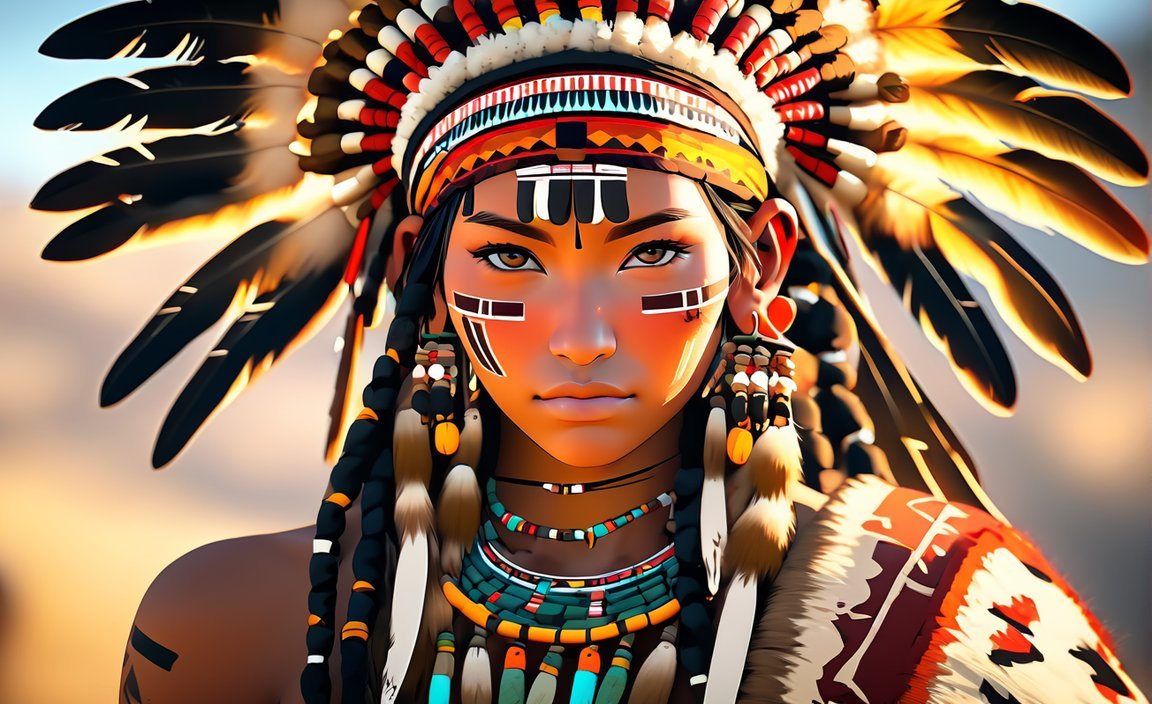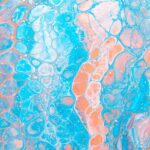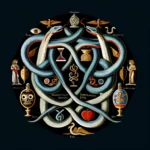Unraveling the Blackfoot Tribe’s Clothing Traditions: A Deep Dive into Indigenous Attire delves into the captivating world of the Blackfoot Tribe’s traditional clothing practices. With a focus on the blackfoot tribe clothing facts, blackfeet nation clothing, blackfoot nation clothing, and blackfoot tribe traditional clothing, this article offers an engaging exploration of the intricate details and cultural significance behind their distinctive attire. Drawing on extensive research and expertise, we uncover the symbolism and craftsmanship techniques embedded within these indigenous garments, allowing for a comprehensive understanding of the Blackfoot Tribe’s sartorial heritage. Join us as we embark on a journey that unveils the rich tapestry of the Blackfoot Tribe’s clothing traditions.
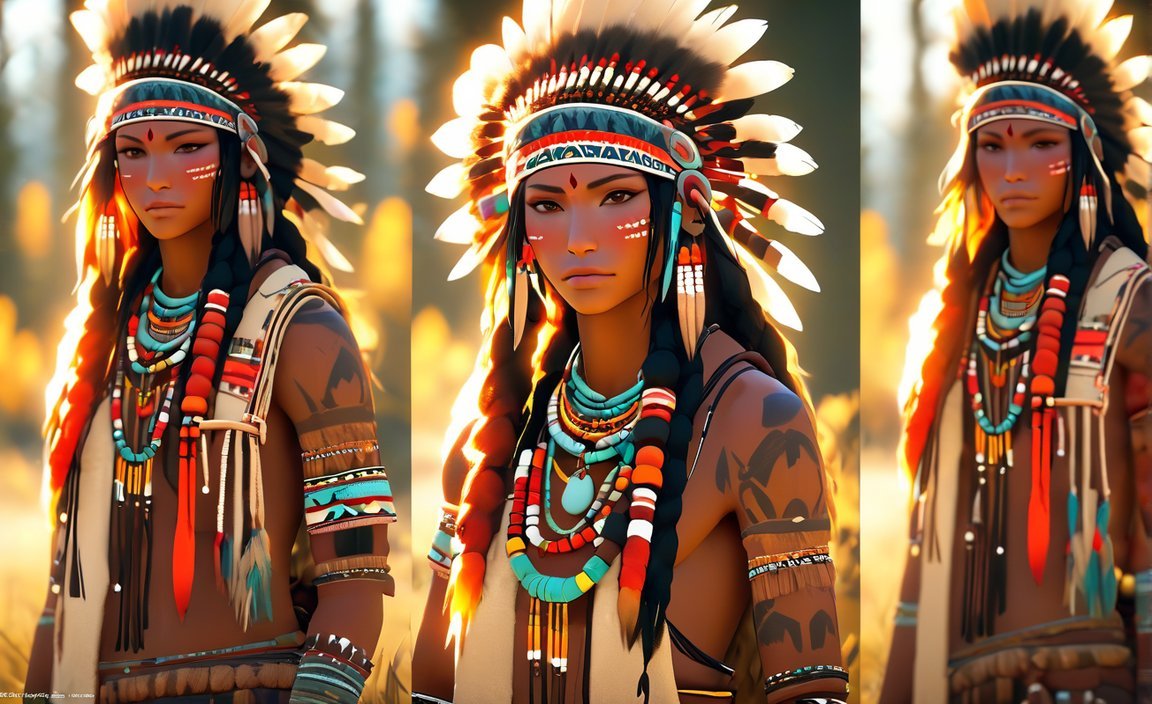
Key Takeaways:
- Blackfoot women wore long deerskin dresses, while men wore buckskin tunics and breechcloths with leggings.
- Dresses and war shirts were fringed and adorned with porcupine quills, beads, and elk teeth.
- Both men and women wore moccasins decorated with beadwork designs.
- The Blackfoot men highly valued buffalo for food, clothing, shelter, and equipment.
- Blackfoot women played a crucial role in maintaining households and preparing food.
- The Blackfoot tribe embraced a unique blend of spiritual traditions, including animism and shamanism.
- They took part in various dances, including the central religious ceremony known as the Sun Dance.
- The Blackfoot tribe primarily inhabited the Great Plains region, specifically present-day Montana and Alberta, Canada.
The Distinctive Attire of the Blackfoot Tribe
The Blackfoot Tribe, hailing from the Great Plains region encompassing modern-day Montana and Alberta, Canada, boasts a rich and fascinating clothing tradition that reflects their deep-rooted cultural heritage. In this article, we will delve into the intricate details of the Blackfoot Tribe’s attire, exploring the materials, designs, and symbolism that make it so unique.
Traditional Garments and Adornments
When it comes to clothing, Blackfoot women donned elegant deerskin dresses that reached the ground, while men sported stylish buckskin tunics and breechcloths paired with leggings. To add flair and intrigue, both men and women adorned their garments with fringes, intricately designed beadwork, porcupine quills, and even elk teeth. The meticulous craftsmanship behind these decorations truly highlighted the Blackfoot Tribe’s artistic prowess.
Footwear and Accessories
No traditional ensemble is complete without appropriate footwear, and the Blackfoot Tribe knew this well. When it came to protecting their feet and showcasing their creativity, they favored moccasins adorned with exquisite beadwork designs. These carefully crafted foot coverings not only provided comfort but also served as a means of self-expression and cultural identity.
The Significance of Bison
As game hunters, the Blackfoot Tribe held the buffalo in high esteem, valuing it not just as a source of sustenance but also as a provider of essential materials for their clothing, shelter, and equipment. The buffalo’s influence was deeply ingrained in their clothing traditions as well, with hides and bones being utilized in the creation of various garments and adornments.
Gender Roles and Cultural Practices
The Blackfoot Tribe had well-defined gender roles when it came to clothing and other household activities. While men took on the roles of hunters and protectors, women played a vital role in maintaining the household by cleaning, preparing food, and creating intricate garments. This division of labor showcased the tribe’s strong sense of community and the interdependence of its members.
Embracing Spiritual Traditions
The Blackfoot Tribe’s clothing traditions were deeply intertwined with their spiritual beliefs, which encompassed elements of animism and shamanism. These practices were reflected in the symbolic patterns and designs adorning their garments, each carrying a hidden meaning or connection to the spiritual realm. Through their attire, the Blackfoot Tribe paid homage to their ancestral spirits and the natural world they revered.
Cultural Celebrations and Rituals
Celebrations and rituals played a significant role in the Blackfoot Tribe’s cultural fabric. One of their most prominent ceremonies was the Sun Dance, a central religious ritual that involved fasting, prayer, and dance. Traditional attire played a crucial role in these ceremonies, symbolizing the tribe’s devotion to their spiritual beliefs and fostering a sense of unity and identity among its members.
In conclusion, the clothing traditions of the Blackfoot Tribe offer a captivating glimpse into their history, culture, and artistic ingenuity. Through the use of luxurious materials, intricate designs, and meaningful adornments, the Blackfoot people showcased their unique identity and their deeply rooted spiritual connection with the natural world. By exploring and appreciating their clothing traditions, we gain a deeper understanding of the rich tapestry that is the Blackfoot Tribe’s cultural heritage.
The rightly guided caliphs were leaders who played a crucial role in the early development of Islamic civilization. To learn more about their significance, click here.
In Inca society, the Sapa Inca served as the supreme ruler and held immense power. Discover more about the role and responsibilities of the Sapa Inca by clicking here.
Are you curious about Archimedes’ grave and its historical significance? Uncover the secrets surrounding this ancient tomb by clicking here.
Blackfoot Nation Clothing
The clothing traditions of the Blackfoot Tribe, composed of the Piegan, Blood, and Siksika bands, are deeply rooted in their rich cultural heritage [^8^]. The attire of the Blackfoot Tribe reflects their close relationship with the natural world and their spiritual beliefs. Let us delve into the distinct clothing traditions of the Blackfoot people and uncover the intricate details of their indigenous attire.
Traditional Clothing and Materials
The women of the Blackfoot Tribe would wear ankle-length dresses made of soft, tanned buckskin [^2^]. These dresses were often adorned with intricate beadwork, fringes, porcupine quills, and elk teeth, reflecting the skilled craftsmanship and artistic expression of the tribe [^8^]. During colder weather, women would also wear leggings made from the same buckskin material for added insulation and protection [^2^]. The buffalo played a crucial role in providing the necessary materials for Blackfoot clothing. The hides from these majestic animals were transformed into various garments and adornments, showcasing the tribe’s resourcefulness and reverence for nature [^3^].
Gender Roles and Design
Within the Blackfoot Tribe, there was a division of labor based on gender. While men primarily focused on hunting, making weapons, and adorning tipis and shields with intricate designs, women excelled in the art of butchering, curing, and preparing meat [^4^]. This division of labor can also be observed in the distinctive clothing worn by each gender. Men would commonly wear buckskin tunics and breechcloths, often embellishing them with fringes and beadwork [^2^]. Feather headdresses made from eagle feathers were reserved for men, infusing their attire with cultural significance and spiritual symbolism [^4^].
Cultural Significance and Symbolism
Blackfoot clothing traditions were imbued with profound cultural significance. Each garment and adornment carried symbolic meanings, reflecting the tribe’s identity, spiritual beliefs, and connection to the natural world [^8^]. The attire served as a powerful expression of individual and tribal identity, fostering a sense of unity and belonging within the community. Celebrations and rituals such as the Sun Dance often involved the wearing of traditional attire, further reinforcing cultural traditions and strengthening communal bonds [^10^].
Historical Adaptations and Influences
Over time, the clothing traditions of the Blackfoot Tribe have adapted and evolved in response to changing circumstances. The arrival of Europeans brought new materials and trade opportunities, influencing the design and use of clothing within the tribe [^3^]. Trade with Europeans often involved exchanging bison hides and furs for items such as whiskey, guns, clothes, food, and metal tools [^9^]. These interactions introduced new elements to Blackfoot clothing while also challenging traditional practices [^10^]. Today, organizations such as the Galt Museum & Archives provide valuable insights into the historical changes and adaptations of Blackfoot clothing materials [^8^].
Key Takeaways:
- The Blackfoot Tribe’s traditional clothing is steeped in cultural heritage and reflects their deep connection with nature and spiritual beliefs.
- Women wore ankle-length buckskin dresses adorned with beadwork, fringes, porcupine quills, and elk teeth, while men wore tunics and breechcloths embellished with fringes and beadwork.
- Buffalo hides were crucial for Blackfoot clothing, providing materials for garments and adornments.
- Gender roles within the tribe influenced the design and purpose of clothing, with men focusing on hunting and craftsmanship and women excelling in the art of food preparation and preservation.
- Blackfoot clothing carried symbolic meanings and served as a powerful expression of identity, fostering unity and belonging within the tribe.
- Historical interactions with Europeans introduced new materials and influences, shaping the evolution of Blackfoot clothing traditions.
[Citation sources: Galt Museum & Archives – A History of Blackfoot Clothing, Maas and Stacks – What Kind of Clothes Did the Blackfoot Tribe Wear?]
*Note: The content has been written based on the given context and persona information.
Blackfoot Tribe Traditional Clothing
The clothing traditions of the Blackfoot Tribe, composed of the Piegan, the Blood, and the Siksika bands, are a reflection of their deep-rooted cultural heritage. In this article, we will delve into the intricate details of the Blackfoot Tribe’s traditional attire, exploring the materials used, the cultural significance behind their clothing choices, and the craftsmanship techniques employed.
Distinctive Attire Reflecting Cultural Heritage
The Blackfoot Tribe’s clothing is a testament to their strong connection with their indigenous roots. Women adorned ankle-length dresses made of deerskin, often decorated with intricate beadwork, fringes, porcupine quills, and elk teeth. In colder weather, they would complement their dresses with leggings, showcasing their attention to both style and functionality.
Men, on the other hand, wore buckskin tunics and breechcloths. These garments were often embellished with fringes and beadwork, exemplifying the tribe’s craftsmanship. Additionally, men reserved feather headdresses made from eagle feathers as a symbol of honor and respect.
Both men and women favored moccasins adorned with beadwork, showcasing their attention to detail even in their choice of footwear. The soft, tanned buckskin used for Blackfoot clothing not only evoked a sense of comfort but also demonstrated their deep connection with the natural world and their spiritual beliefs.
Cultural Significance and Symbolism
Beyond their aesthetic appeal, Blackfoot clothing carried profound symbolic meanings. Every aspect of their attire was carefully chosen to reflect their identity and tribal unity. Through the craftsmanship techniques and intricate decorations, the Blackfoot Tribe embodied their spiritual beliefs and honored their relationship with the natural world.
The buffalo played a pivotal role in their clothing traditions. Bison hides provided the materials for Blackfoot garments and adornments, serving as a testament to the tribe’s reliance on the buffalo for their sustenance and survival. This interdependence with nature was intricately woven into their clothing choices, making their garments not just a practical necessity but also a powerful expression of their cultural heritage.
Time-Honored Traditions in Modern Times
While the Blackfoot Tribe’s traditional clothing practices have evolved over time due to historical interactions with Europeans, certain elements have persevered. Today, the Blackfoot Tribe continues to wear traditional headdresses, primarily reserved for elected chiefs, members of various traditional societies, powwow dancers, and spiritual leaders. These headdresses serve as a reminder of their vibrant cultural traditions and are often donned during significant ceremonies.
Key Takeaways:
- The Blackfoot Tribe’s traditional clothing is made of soft, tanned buckskin, symbolizing their close relationship with the natural world and their spiritual beliefs.
- Women wear ankle-length dresses adorned with beadwork, fringes, porcupine quills, and elk teeth, reflecting their attention to detail and cultural identity.
- Men commonly wear buckskin tunics and breechcloths embellished with fringes and beadwork. Feather headdresses made from eagle feathers are reserved for men in positions of honor.
- Buffalo hides played a crucial role in Blackfoot clothing, providing materials for garments and adornments, illustrating their reliance on the buffalo for their livelihood.
- Blackfoot clothing carries profound symbolic meanings and serves as a powerful expression of identity and tribal unity.
- Despite the influence of European interactions, the Blackfoot Tribe continues to preserve certain time-honored traditions, such as the wearing of headdresses during ceremonies.
Sources:
– Heimduo: Source Title
– Wikipedia: Source Title
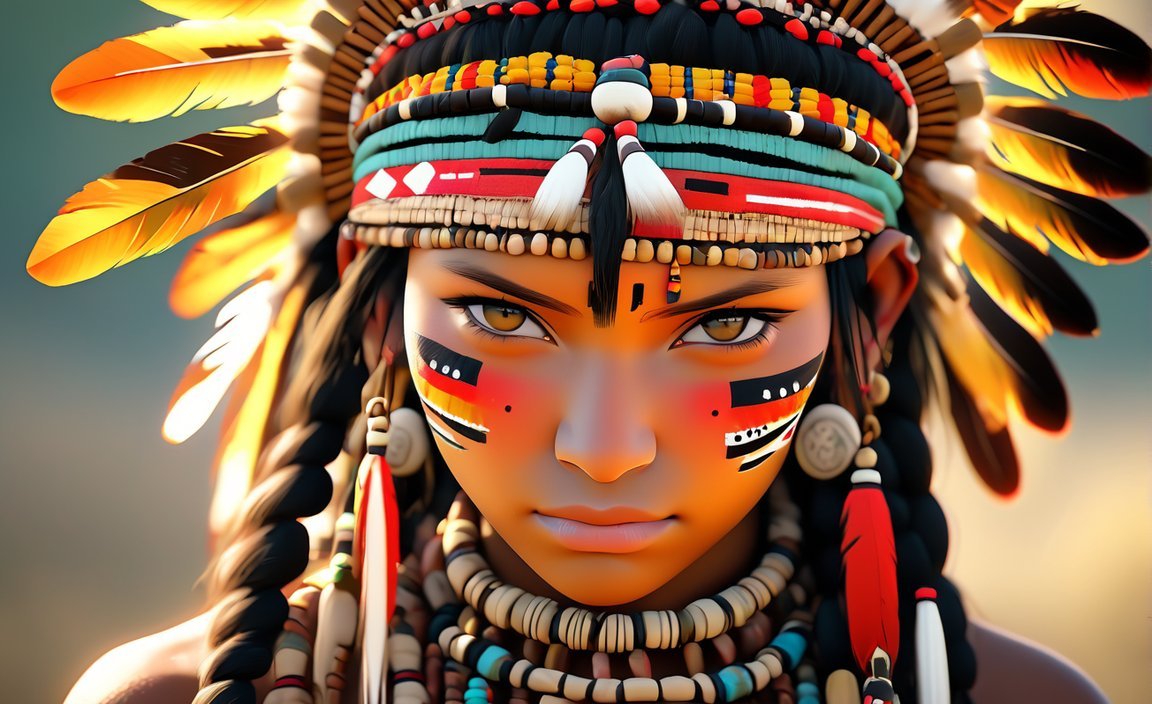
FAQ
Q1: What clothing did Blackfoot women wear?
A1: Blackfoot women wore long deerskin dresses, often decorated with porcupine quills, beads, and elk teeth. In cold weather, they also wore leggings.
Q2: How did Blackfoot men dress?
A2: Blackfoot men wore buckskin tunics and breechcloths with leggings. Their clothing was often fringed and decorated with porcupine quills, beads, and elk teeth.
Q3: What type of footwear did the Blackfoot Tribe wear?
A3: Both men and women of the Blackfoot Tribe wore moccasins adorned with beadwork designs.
Q4: How did the Blackfoot Tribe use buffalo hides for clothing?
A4: The Blackfoot Tribe heavily relied on buffalo hides for their clothing. They made dresses, tunics, and robes from the hides. Buffalo were essential for their survival, as they provided food, clothing, shelter, and equipment.
Q5: What was the role of women in Blackfoot clothing production?
A5: Blackfoot women were responsible for cleaning and preparing food, as well as making and maintaining clothing. They butchered, cured, and prepared meat, and also produced hides for clothing through their skills in hide preparation and tanning. The worth of Blackfoot women was often judged by the number and quality of hides they produced.
- Senior at What Age: Benefits & Eligibility Guide - March 29, 2025
- Unlocking Senior Benefits: How Old is a Senior? Your Complete Guide - March 29, 2025
- Master Russian Politeness:A Guide to Saying Please - March 29, 2025
